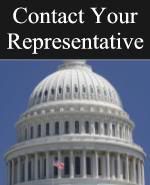Analysis of STRIVE Act (Part 1: Enforcement Sections)
 This is the first in a series of articles intended to look at some of the key provisions of the “The Security Through Regularized Immigration and a Vibrant Economy Act of 2007” (STRIVE Act of 2007) introduced by U.S. Representatives Luis Gutierrez (D-IL) and Jeff Flake (R-AZ).
This is the first in a series of articles intended to look at some of the key provisions of the “The Security Through Regularized Immigration and a Vibrant Economy Act of 2007” (STRIVE Act of 2007) introduced by U.S. Representatives Luis Gutierrez (D-IL) and Jeff Flake (R-AZ).
There has already been a great deal of information made available about the bill, much of it supplied by the immigration law community. Two extensive section by section summaries are available here, and here and the AILA has posted a summary for download here. Additionally, the complete text of the bill is available for download from the GPO here.
This analysis is intended to supplement those summaries already available by highlighting those areas of the bill that are the most troubling and will need revision or modification in order to produce the kind of meaningful legislation we hope to see coming out of this congress.
I must provide a caveat that I'm not an attorney and in no way claim any more than a layman's comprehension of the intricacies of the proposed legislation. Yet, one need not be an attorney to see some of the most glaring inadequacies of the bill, and it is those inadequacies I hope to shed some light on through this analysis.
In this first installment, we'll be looking at the first three sections of the bill that deal with the enforcement aspects of the legislation. TITLE I – BORDER ENFORCEMENT, TITLE II – INTERIOR ENFORCEMENT, and TITLE III – EMPLOYMENT VERIFICATION. In subsequent installments we'll examine the sections dealing with guest workers and legalization of the current undocumented population.
Since STRIVE creates a "trigger" mechanism which prevents the implementation of other aspects of the legislation from going into effect until the enforcement goals are achieved, they in effect become the linchpin of the entire bill.
SECURITY THROUGH REGULARIZED IMMIGRATION AND A VIBRANT ECONOMY ACT OF 2007 (“STRIVE” ACT OF 2007)
Certification Requirements Prior to Implementation of New Immigrant Worker Programs:
The bill opens with the Certification Requirements that must be met before any guest worker program or plan to legalization the current undocumented population can take place. This is the "triggers" section of the bill. Nothing can happen until these requirements are met:
(This initial section indefinitely delays the implementation of any form of reform in immigrant status until the Secretary of DHS certifies that certain "border security" aspects of the bill are completed. In essence the current undocumented population would remain in jeopardy, subjected to raids, incarceration, and deportation until such time as the DHS can implement numerous costly and complicated programs laid out in sections I through III.) TITLE I – BORDER ENFORCEMENT
SUBTITLE A, sec 101-107 calls for recruitment of former members of the Armed Forces to serve as border patrol agents and increasing the availability and use of Department of Defense equipment to assist in surveillance activities to prevent illegal immigration. Adds just under 12,000 new Border Patrol agents over 5 years, 1000 more ICE agents, and 50 more US Marshalls. Calls for the building of roads and additional ports of entry, and the purchase vehicles and unmanned surveillance aircraft.
SUBTITLE C, sec 124 Governors may authorize National Guard troops to engage in reconnaissance activities, provision of translation services, emergency medical assistance services, the rescue of aliens in peril, and the construction of roadways, patrol roads, fences and barriers at the border for up to 21 days per year.
(These sections further militarize the border)
SUBTITLE D – Secure Entry Initiatives
Sec. 131 calls for enhance connectivity between DHS’ Biometric Fingerprint Identification System and the FBI’s identification system and the collection of all fingerprints from each alien required to provide fingerprints during the alien’s initial enrollment in the integrated entry and exit data system.
Sec. 134 states that no later than December 31, 2008, all immigration-status documents, other than interim documents, issued by DHS must be machine-readable, tamper resistant and incorporate biometrics.
(These sections require the expansion of data collection and issuing of new boimetric documentation to all current and future immigrants before any other reform measures can be enacted)
Sec 136 This section creates new crimes and penalties for evading border inspection. Prison terms of three to ten years are issued depending on whether violence is used or not. Any person who willfully disregards or disobeys the command of an immigration agent shall be fined or imprisoned for not more than five years or both.
(This section lays out the first of many new penalties aimed at those trying to cross the border. As will be seen in future sections of the bill, most of the "tough enforcement" measures in this bill are aimed exclusively at the roughly 55% of illegal entrants who cross the border on foot or by vehicle, as opposed to those who overstay visas. Where last years Sensenbrenner House Bill made all undocumented immigrants felons based on their illegal presence in the United States, the Gutierrez-Flake bill makes all immigrants who entered without inspection criminals. This is a subtle yet substantial distinction that runs throughout the bill. It divides those who had the ability to enter legally, then went out of status by over-staying their visas, and those who come from a country or economic class where non-immigrant visas are routinely denied into essentially two different classes of undocumented immigrants.)TITLE II—INTERIOR ENFORCEMENT
SUBTITLE A - Reducing the Number of Illegal Aliens in the United States
Sec. 206 authorizes the use of expedited removal procedures to determine the deportability of aliens who are non lawful permanent resident aliens and who have been convicted of any criminal offense that establishes the alien's deportability under the INA relating to aggravated felonies.
(This section, along with new broader definitions of "aggravated felonies" set forth in Sec. 233, that include any offenses described in the aggravated felony definition regardless of whether the offense are state or federal violation and include foreign offenses where the imprisonment was already completed, gives the DHS expanded power to deport undocumented immigrants without all the rights of due process.)
Sec. 214 Creates a new ground of inadmissibility and deportability for persons convicted three times of drunk driving, one of which is a felony under state or federal law and for which the alien was sentenced for one year or more.
(This section further expands the list of deportable crimes)
Sec. 217 authorizes DHS to construct and acquire at least 20 additional facilities for the detention of aliens that have a capacity to detain a combined total of not less than 20,000 individuals at any time for aliens pending removal or a decision on removal.
Sec. 219 expands the Justice Prisoner and Alien Transfer System (JPATS). The expansion will include increasing the use of buses and air hubs in three geographic regions.
(These section further expand the DHS' detention and removal system. (last year JPATS air service transported a record 116, 000 undocumented immigrants to holding facilities or their countries of origin)
Sec. 221 This section amends the criminal code and expands penalties for passport, visa and
document-related fraud .
Any person who:
shall be fined under this title, imprisoned not more 15 years, or both.
Any person who:
shall be fined under this title, shall be imprisoned not more than 5 years, or both.
(The broad wording of this section would make the vast majority of undocumented immigrants, who use false or altered documentation to obtain employment, housing, and other essentials, subject to criminal penalties including up to 15 years in prison for possessing false documentation. It essentially criminalizes the vast majority of undocumented immigrants)
SUBTITLE C: Detention and Removal of Aliens
Sec. 231 This section deals with the circumstances whereby DHS can detain undocumented immigrants longer than 90 days. Essentially this is the "indefinite detention" section of the bill. It actually it expands beyond Sensenbrenner the circumstances by which an undocumented immigrant can be detained for an indeterminate period of time.
An alien can be held if:
(a)failed or refused to make all reasonable efforts to comply with the removal order
(b) failed or refused to fully cooperate with the DHS to establish his identity and carry out the removal order, or
(c) conspired or acted to prevent such removal
(Currently indefinite detention is usually applied to non-citizens ordered removed from the United States whose countries refuse to accept them or who have no country because they are stateless. This is particularly true in the case of asylees from states that either have no repatriation policies like China or have poor diplomatic relations with the US. This legislation would greatly expand the circumstances under which an undocumented immigrant could be held indefinitely to include those who failed to fully cooperate with the DHS on numerous counts)
Section 235. Illegal Entry
This section makes it a criminal offense to knowingly enter or cross the border into the U.S. at a time or place other than as designated by the DHS; to knowingly elude examination or inspection by an immigration officer (including failing to stop at the command of such officer) or a customs or agriculture inspection at a port of entry; or to knowingly enter by means of a false or misleading representation or concealment of a material fact. Criminal penalties under this section increase if the violation occurred after a criminal conviction(s).
This section also increases the civil penalties for aliens apprehended while entering, attempting to enter, or knowingly crossing or attempting to cross the border to the United States at a time or place other than as designated by immigration officers.
(This section contains a crucial point in the Gutierrez-Flake bill. The bill has shifted the criminalization of undocumented immigrants from the "illegal presence" model of HR4437 that made being in the country without proper documentation a criminal offense, to an "illegal entry" model whereby entering the country without proper documentation becomes a criminal offense. Although the outcome of both bills would make a vast numbers of undocumented immigrants criminals, the Gutierrez-Flake model essentially exempts those who have entered legally then overstayed their visas. This targeting of those who have crossed the border without proper documents can only be seen as an obvious attempt focus attention on those from Mexico and Central America.)TITLE III – EMPLOYMENT VERIFICATION
Sec. 301. Employment Verification.
This section makes it unlawful to hire or continue to employ anyone that an employer knows is not authorized, provides good faith shield for employers, and authorizes the DHS to require employer certify compliance.
The employment verification system is significantly altered by now only allowing for a limited number of identification documents to work for employment verification purposes.
For U.S. nationals:
For lawful permanent resident:
For non-LPR who is authorized for employment:
For worker who is not able to obtain a document listed above, a document designated by the DHS that contains:
This section also creates a new employment verification system. The Electronic Employment Verification System (EEVS) revolves around a new biometric, machine readable, social security card that all residents will be required to possess. Additionally a cross-agency, cross-platform system will be implemented to share immigration, tax and social security information.
Within a year, all “critical” employers - mainly government agencies – must be using the system. Within two years, all employers with more than 5,000 workers must be using the stem. Within three years, al employers at the 1000 to 5000 level must be using the system. And within four years, all employers must be using the system.
This section raises many concerns. The limiting of acceptable documentation, even for US nationals, will adversely impact thousands of low-income U.S. workers who do not possess the type of identification required to obtain a job. The REAL ID drivers license program that is crucial to the plan has been roundly rejected by many of the states and it's doubtful it will universally accepted in any reasonable timeframe.
Although the bill goes to some length to point out it's not calling for a National ID, the new "secure" Social Security card that the bill requires, along with the information sharing requirements between the DHS, SSA, and IRS that go along with it, can be seen as nothing short of a de facto National ID.
Conclusion part I
One of the major flaws in Gutierrez-Flake bill is its attempt to find a compromise position somewhere between last year's Senate bill and the Sensenbrenner House bill. In trying to be all things to all people it has managed to encompass some of the worst aspects of both bills. The policy that most of the enforcement aspects of the bill must be effective before the "trigger" mechanism will be enacted for real immigration reform will effectively put meaningful reform on hold for possibly years.
The primary beneficiaries of the “trigger” benchmarks that could indefinitely delay urgently needed legalization will not be the American people who overwhelming want true comprehensive reform, or the millions of current undocumented immigrants living in an "immigration limbo", but rather the business interests that stand to reap huge financial benefits from supplying the needed technology and infrastructure required by the bill.
The very companies that have been the real beneficiaries of our current Iraq policy: Boeing, Ericsson, Lockheed, Northrop Grumman, Raytheon, etc. are now redirecting their efforts on the US border as the prospects for huge windfalls in Iraq come to a close. At the invitation of the Department of Homeland Security, Lockheed currently has more than 100 executives working on the Secure Border Imitative. Boeing, Ericsson, Northrop Grumman and Raytheon are vying for the same slice of the DHS budget pie. According to CorpWatch, each of these rivals has between 70 and 100 executives assembling security teams and designing new border technologies.
Additionally, the keeping, or shifting, of many of the worst aspects of last years House bill in regards to criminalization of the undocumented make the Gutierrez-Flake bill a highly flawed piece of legislation.
But it is not beyond repair.
Comprehensive reform can be accomplished…and the Gutierrez-Flake bill appears to be the starting point we must begin our journey from….it will be a long …but it can be done. But it must be realized that as currently written the bill is a most unacceptable attempt at true immigration reform.
In the second part of this series we'll look at the guest worker and the path to legalization aspects of the bill
tags: immigration, STRIVE Act , Flake, Gutierrez, HR1645, H.R.1645

































2 comments:
This is a really great summary. I posted a link from the immigration forum I am a member of (primarily for relatives of immigrants, undoc. and otherwise). I know there are a lot of people there looking for a clear, concise explanation of what is being proposed. Thanks!l
Thanks,
BTW I read you post on this...really well done.
http://laurafern.wordpress.com/2007/04/11/double-standard
Post a Comment